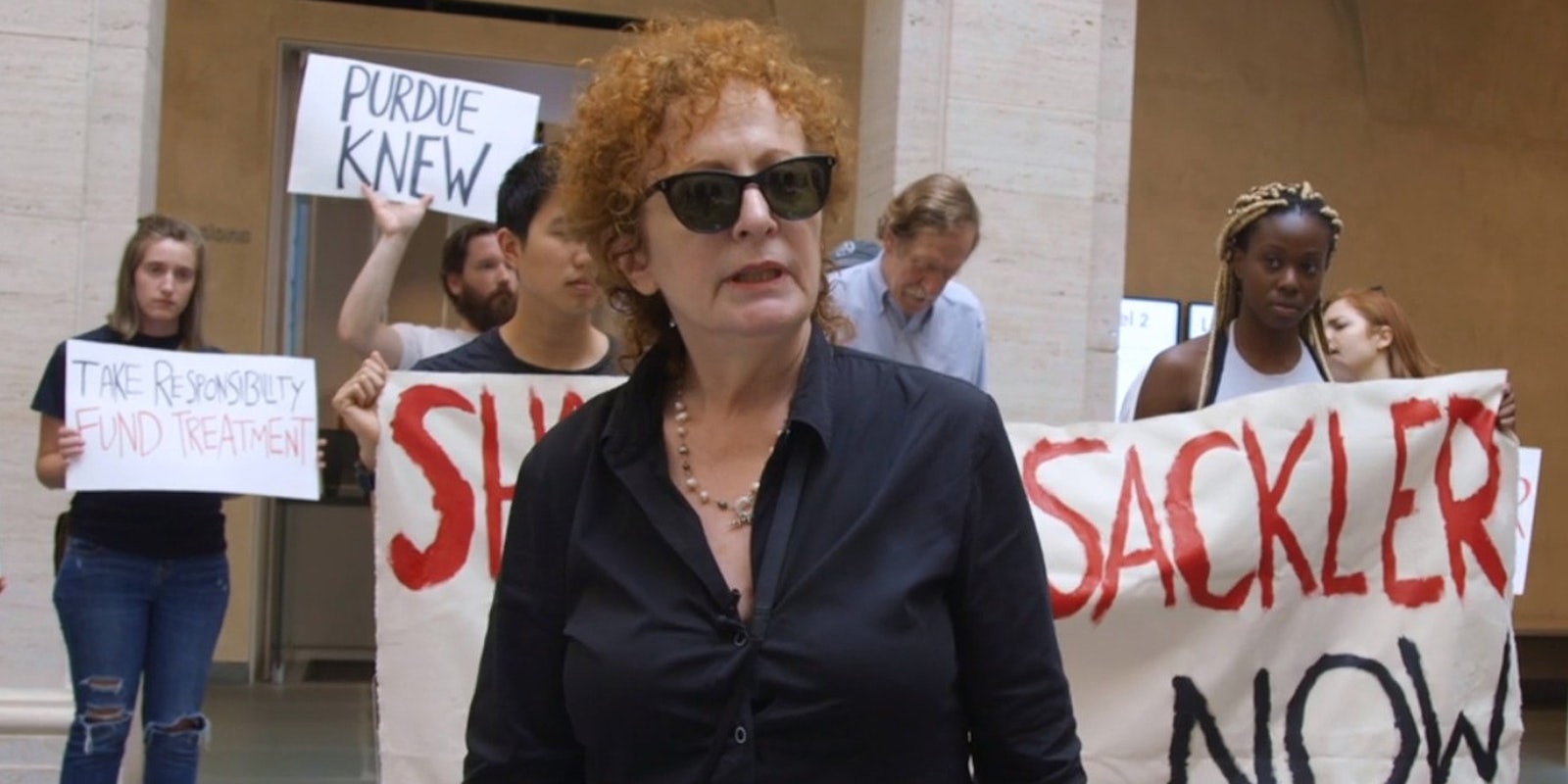Laura Poitras’ Oscar-nominated documentary All the Beauty and the Bloodshed is now on HBO Max, and it’s a must-see portrait of the radical bond between art and activism.
The film, which debuted on Sunday, focuses on the life and work of photographer Nan Goldin. But it begins with a scene at the Metropolitan Museum of Art, orchestrated by P.A.I.N. (Prescription Addiction Intervention Now), Goldin’s advocacy group, created in an effort to hold the Sackler family accountable for millions of opioid deaths, and museums accountable for taking blood money from the family under the guise of philanthropy.
Goldin herself struggled with OxyContin addiction, writing in Artforum in 2018 that she “narrowly escaped.”
Goldin, by her own account, narrowly escaped several times in her life.
All the Beauty and the Bloodshed is a gorgeous study of found family, queer community, and grief. Goldin’s vivid, intimate photos of friends and acquaintances, many of them from New York City’s early ‘80s art scene, add layers of context, and photos of herself offer a timeline of how her work evolved—and the experiences that shaped it.
Eventually, there’s a montage of photos of friends who died of AIDS, and it becomes clear that this isn’t a document of two separate parts of Goldin’s life, but a linear one punctuated by government denial and inaction, which in turn robbed people of their lives. It’s not a doc filled with talking heads; there are chapters, and Goldin does most of the talking.
Why it matters
“The goal is to get the names off the walls,” Goldin says in the doc.
We see that P.A.I.N.’s in-person actions, inspired by ACT UP’s playbook, did have an effect: In late 2021, the Met removed the Sackler name from its walls, and other museums and galleries followed suit. The closing image of Goldin pointing her camera at Poitras (and the viewer) sticks with you long after the film is over.


